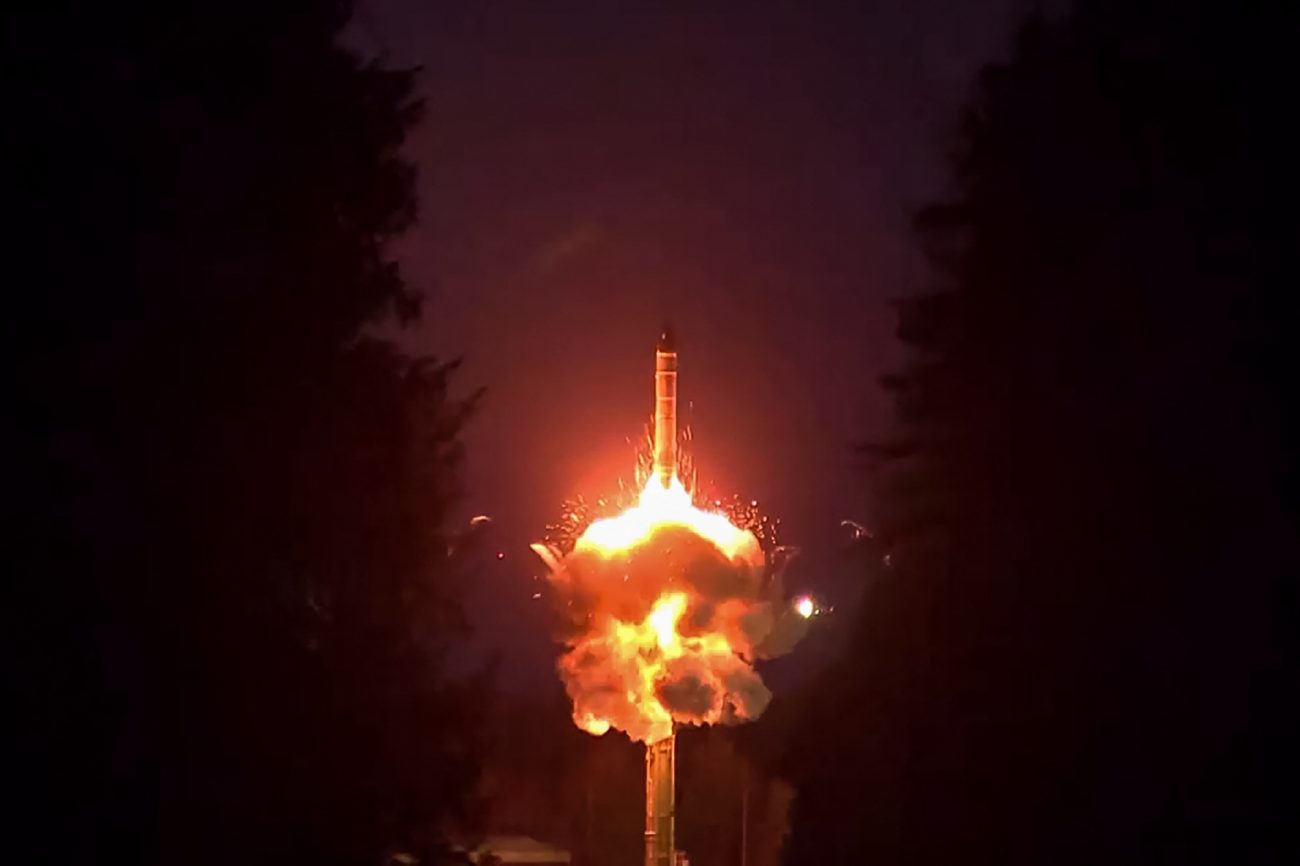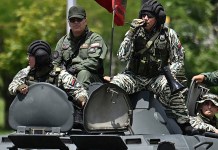On August 21, 2025, Russia successfully launched four small military satellites aboard an Angara-1.2 rocket from the Plesetsk Cosmodrome.
The Angara-1.2 is a two-stage, light-lift Russian launcher capable of placing up to ~3.8 t into LEO (Low Earth Orbit) or ~2.4 t into sun-synchronous orbit.
This was the fifth overall orbital mission for the Angara-1.2 variant and the second in 2025. The payloads are classified under the Kosmos series, specifically designated as OO MKA No. 3, MKA No. 4, MKA No. 5, and MKA No. 6.
The designation MKA, used in relation to Russian military satellites, stands for the Russian phrase «малый космический аппарат», which translates to “small satellite.”
The satellites are part of Russia’s small, operational-experimental reconnaissance series, where “OO-MKA” indicates optical observation in a pre-production/developmental phase.
Past Launches
Earlier this year, on February 5, 2025, Russia launched Kosmos 2581, 2582, and 2583 into SSO using the Soyuz-2.1v/Volga combination from Plesetsk.
These satellites bear the MKA-B designation, likely a variation of the EO-MKA line of small optical reconnaissance platforms.
In 2024, Russia launched at least 10 optical reconnaissance satellites, primarily under the EO-MKA and Razbeg designations.
Razbeg is a small military optical reconnaissance satellite weighing around 250 kg. It was built by NPP VNIIEM. It features a camera built by the Belarusian company OAO Peleng, with a maximum ground resolution of 0.9 m in panchromatic mode.
Advanced Small Optical Reconnaissance Satellite
In March 2025, RIA Novosti reported that RSC Energia had begun testing a new optical imaging satellite designed to obtain images with a resolution of 0.5 meters per pixel from an orbit 500 kilometers high.
The new satellite will provide geoinformation products used in planning territories for construction and will also help to identify unauthorized development of subsoil resources.
U.S. To Acquire Iran’s Shahed-136 Drone Clones; Aims To Test Counter-UAS Against Kamikaze Threats
Heavy Optical Reconnaissance Satellites
Russia’s heavy optical reconnaissance satellites form the backbone of its strategic space-based imagery capability, complementing its growing fleet of small EO-MKA and Razbeg-class satellites.
Unlike the smaller optical reconnaissance satellites, which feature compact optical sensors, the heavy satellites are essentially telescopes placed in orbit, designed to provide very high-resolution (sub-0.5 m class) imagery comparable to U.S. KH-11/CRYSTAL systems.

Persona / Razdan Satellites
The primary series is Persona (14F137), operational since 2013, and its successor, Razdan (14F156), is believed to have begun deployment in 2022.
The variants are based on robust satellite buses (likely derived from Resurs-DK/Resurs-P civilian Earth observation platforms) and feature large-aperture telescopes built by the LOMO optical institute. The satellites facilitate detailed reconnaissance of strategic military assets, infrastructure, and battlefield movements.
Persona has a 1.5 m primary mirror. Razdan is marginally heavier, with a slightly larger mirror (2.4 m) and a more sensitive sensor.
Persona is a purely military system and reportedly the most advanced Russian reconnaissance satellite.
Resurs-P2
Resurs-P2 is a slightly less sophisticated version of Persona for military and civilian use. Resurs satellites can survey large swathes of territory, extending up to 2,000 km, as well as focus on individual objects on the Earth’s surface. The satellite can reportedly photograph 80,000 square kilometers per day in high-resolution mode.
Heavy Russian optical reconnaissance satellites are typically launched aboard Soyuz-2.1b or Proton-M rockets from Plesetsk Cosmodrome. Once deployed, they operate in sun-synchronous orbits (SSO) at altitudes around 700–750 km, ensuring consistent lighting conditions for imaging across passes and facilitating wide-area coverage.
This orbit allows regular revisits over key regions of interest, vital for tracking NATO deployments, monitoring Ukraine, and observing other strategic theaters.
Unlike smaller satellites, which provide tactical responsiveness, heavy platforms like Persona and Razdan are intended for long-duration missions (7–10 years), ensuring continuous strategic surveillance.
Russia has never released a drawing or image of the Persona satellite. A fuzzy ground-based photograph of the satellite taken by a British amateur satellite observer in 2008 suggests it looks like a small version of the Hubble Space Telescope, with solar panels mounted parallel to the satellite body.
Bars-M Satellites
Bars-M (14F148) is smaller and lighter than Persona/Razdan. While Persona is estimated to weigh 7,000 kg, Bars-M weighs around 4,000 kg.
It features a digital imaging payload representing Russia’s transition away from expendable film-return technology to real-time electronic transmission of images. It provides up-to-date digital topographic data for the Russian General Staff, supporting targeting, operational planning, and terrain analysis.
Bars-M is optimized for high-resolution mapping and area survey rather than ultra-detailed spot imagery. Its optical system reportedly delivers sub-meter resolution.
First launched in 2015, Bars-M replaces the older Kometa/Kobalt film-return satellites.
The Bars-M satellites are placed in sun-synchronous orbit (SSO) at about 500–600 km altitude for military cartography, combining topographic and high-resolution Earth imaging. In comparison, Persona/Razdan operate at about 700–750 km altitude. Bars-M’s lower orbit allows finer ground resolution, though over a somewhat narrower swath.
The Bars-M satellites are launched into orbit using the medium-class Soyuz-2.1a launch vehicle.
The satellites are developed and manufactured by TsSKB-Progress. They feature three compartments: a service module, an instrument module, and a payload module.
The payload module features the Karat imaging instrument, built separately by the Leningrad Optical Mechanical Association. It also hosts a dual laser altimeter for topographical data such as ground elevation. The imaging system is believed to have a ground resolution of around one meter.
The Bars-M’s main instrument is a dual telescope called OEK Karat, where OEK stands for Optical Electronic Complex. The triple-lens instrument was developed at the LOMO company in St. Petersburg, which also built the main imaging system for the Persona reconnaissance satellite.
The Bars-M satellites use an SVIT propulsion system located in the non-pressurized service module and composed of the main engine and 12 attitude thrusters. Two deployable solar arrays provide electrical power to the spacecraft.
Since the start of its Special Military Operation in Ukraine, Russia has launched four Bars-M satellites.
In comparison, the U.S. has six Keyhole EO satellites.
Conclusion
Russia appears to have accelerated the deployment of small optical reconnaissance satellite constellations to strengthen situational awareness of threats from Ukraine.
At present, Western satellite and aircraft-based radar and optical systems give Ukraine a decisive ISR advantage over Russian territory.
By fielding constellations of smaller, low-cost optical satellites in orbits optimized for monitoring Ukraine, Russia aims to narrow this gap and reduce Kyiv’s surveillance edge.
- Vijainder K Thakur is a retired IAF Jaguar pilot, author, software architect, entrepreneur, and military analyst.
- VIEWS PERSONAL OF THE AUTHOR
- Follow the author @vkthakur




